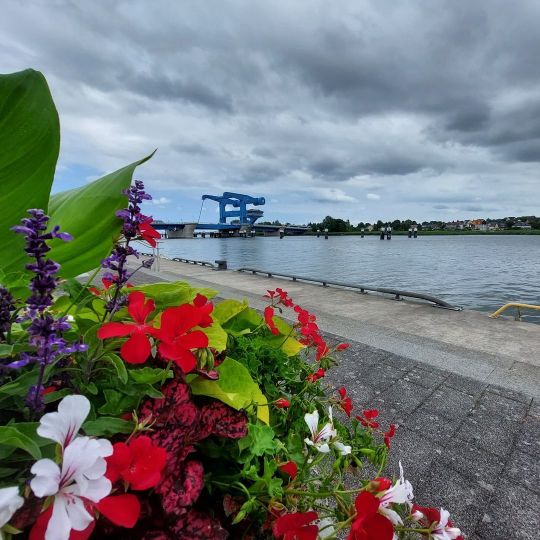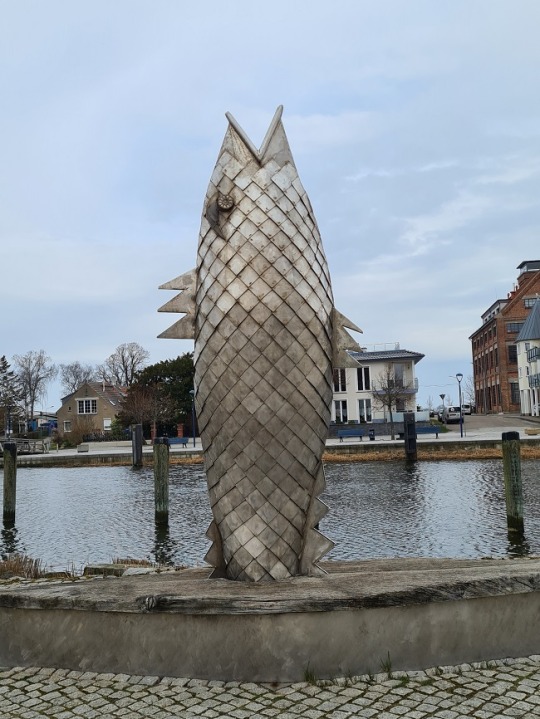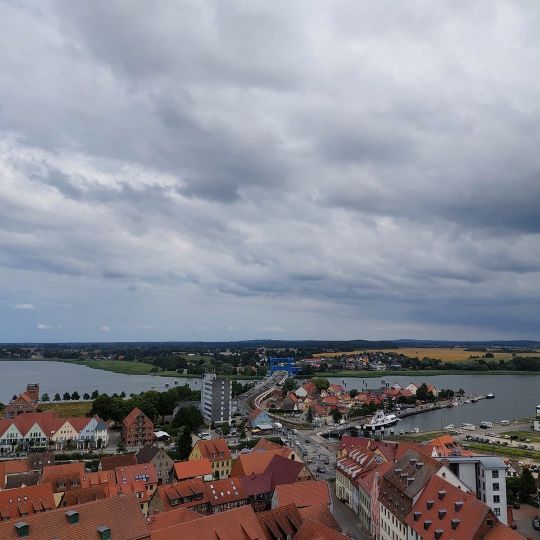#Wolgast
Text




Ansichtskarte
HO-G "VIER JAHRESZEITEN"
Wolgast.
[Herbert Henke, Ulrich Wilken, 1956/57]
keine weiteren Angaben, gelaufen 1967
#Wolgast#Bezirk Rostock#1960er#1967#Gaststätte#Philokartie#DDRPhilokartie#Architekturphilokartie#Archigrafie#VierJahreszeiten#akWolgast#BezirkRostock#AlltagskulturDerDDR#Ansichtskartenfotografie#AnsichtskartenfotografieDerDDR#deltiology#VintagePostcard#DDRArchitektur#GDRArchitecture#SocialistArchitecture
11 notes
·
View notes
Photo

Wolgast, meine Heimatstadt. Aufgenommen im November 2021.
182 notes
·
View notes
Photo

Leider die Öffnung knapp verpasst 🙄, ist aber trotzdem beeindruckend 🤓. #peenebrücke #wolgast #urlaub #bestview #water #spaziergang #radtour #radfahren #mv #mvtutgut #runtervondercouch #mecklenburgvorpommern #frischeluft (hier: Peenebrücke Wolgast) https://www.instagram.com/p/CRjKvOessgn/?igshid=NGJjMDIxMWI=
#peenebrücke#wolgast#urlaub#bestview#water#spaziergang#radtour#radfahren#mv#mvtutgut#runtervondercouch#mecklenburgvorpommern#frischeluft
5 notes
·
View notes
Text
Kommentar überflüssig...
youtube
View On WordPress
0 notes
Text
Hotel in Wolgast schnell finden – Rooms24

Buchen Sie jetzt das beste Hotel in Wolgast! - Rooms24
#wolgast#deutschland#rooms24#rooms#ferienvermietung#ferienhaus#ferienwohnung#monteurzimmer#gästezimmer#unterkünfte#unterkunft#privat unterkünfte#hotelangeboten#luxury hotel#hotels#hotel#hotels and resorts
0 notes
Text
Male cumshot mobile gay sex videos and free twink thumbs first time
Step dad gets to shag his breasty daughter in avid hardcore
Young tanned latina takes dick in her tight pussy
Cuties penetrate fellas anal hole with huge strap dildos and blast jizz
Elisa Sanches Fodendo com Dois Amigos
Asian girlfriend doggy complete
Tesudo com morena sentando gostoso
anna zharavina sexy russian from garter belt
Pendeja con coletitas mamando
Straight male gay pornstars list of names and free clips straights
#safe-hidden#overhurried#reattains#wreckages#bavaroise#breadbasket#Wolgast#enfiladed#Sparganiaceae#sayu#Civia#hyperarchaeological#toothy#hieroglyphic#batzen#pyroracemic#lanknesses#Cambridgeshire#globelet#madhouse
0 notes
Text
Rewatching The Passage and have come to the realization that Sir thinks he is Brad Wolgast in his mind
#There are a lot of inverted comparisons to be made between the two#and the relationships they forged with Amy and Gabi are complete polar opposites#the passage#found nbc#found peacock#Brad Wolgast#gabi mosely#amy bellafonte#hugh evans#sir
10 notes
·
View notes
Text
Some notes on the cult of Svątovit.
My worries about whence did Svątovit acquire an association with state-sanctioned violence (ordinarily the domain of Perun) and the implications of his tension with the cult of Ruyevit were unfounded—there was no such association. The residence of the Rani kings and the capital of Rujan was in Korenica—which you might remember as the centre of Ruyevit's cult. At no point during his transformation into Ruyevit did Perun lose his association with the state among the Polabians; the tension between his cult and the cult of Svątovit is but the reflection of a tension between the Rani state and the priesthood of Svątovit, the god's high priest in Arkona (if Saxo's account is to be believed) formally stationed even above the king in Korenica. Ruyevit might be the god of war, but it's the high priest of Svątovit that decides, through divination, when is it an opportune time to wage war.
While not an outright confirmation, this factoid does corroborate my thesis there was never any substantial, intrinsic opposition between the cults of Perun and Veles: the hostility of Svątovit's priesthood toward Ruyevit was a peculiarity of Rujan.
Perun is listed (under the regular Wendish variant ‘Poren’) as a god worshipped by the West Slavs in Helmold of Bozov's Chronicle of the Slavs—specifically, he's named as the tutelary deity of Oldenburg country, to the west of Rujan. Given that Ruyevit is only attested on Rujan, and is named as the god of the island by Saxo, I'm willing to believe the substitution of Perun for Ruyevit was peculiar to the Rani and does not reflect the religious tendencies of other West Slavic tribes.
The Rani were really, really weird.
I've yet to find a mention of Veles among the West Slavs. Am I really ready to believe Veles was substituted for Svątovit among all of the Wendish tribes? Well, maybe; superseding a name that might as well translate to ‘Corpse Lord’ with an euphemistic honorific is not actually that big of a deal, and doesn't intrinsically indicate a shift in function or worship. But a lot of the religious weirdness I've previously ascribed to West Slavs (or even Polabians specifically) appears to had been peculiar to the Rani. I'm sort-of willing to believe he might've even been recognised under his true name by Slavs in mainland Polabia and the surrounding regions, his absence from toponyms being more-or-less an accident of history; toponyms referring to Veles are actually rather rare among the East Slavs, too (but not nonexistent), and are specifically concentrated in the general area of former Yugoslavia. If nothing else, I have no reason to suspect the cult of Svątovit was substantially different from the cult of Veles in, like, Mecklenburg or Wolgast.
Edit: Take note of the following, also—

12 notes
·
View notes
Text

"Läuft" in Memmingen!
Trecker-Mob
Letzen und vorletzten Donnerstag sah es wohl ähnlich aus:
https://x.com/melly_katze/status/1758602579267707239
https://x.com/JustinC71538094/status/1755649607369920771
Interessant ist, dass jedes Mal jemand anders die Videos postet. Melly z.B. berichtet heute aus Wolgast und Zittau. Um Videos müssen sich die Hetzaccounts nicht bemühen, die bekommen sie gerne zugeschickt oder laden sie einfach selber runter. Und wahrscheinlich wechseln auch die Anmelder der Demonstrationen wöchentlich.
Alles in Allem ist das Thema auf Social-Media aber durch. Die Suche bringt keine 10 ernstzunehmenden Einträge. Der Rest stammt von großen Hetz-Accounts, die aus der Pandemie bekannt sind. Das mit der Bekanntheit gilt erst recht für ihre Ziele.
Die dortigen Videos stammen meist aus Frankreich, Spanien und seltener den Niederlanden. Natürlich werden sie stets als hochaktuell dargestellt, was in den seltensten Fällen zutreffen dürfte.
3 notes
·
View notes
Text
Clark Richards and Brad Wolgast's dynamic in The Passage is what Steve and Tony's should've been
#I am begging y'all to watch The Passage it's so so so good#just skip the 3rd episode if you don't want to fall apart in a sobbing mess on the floor#vera talks#marvel#the passage
7 notes
·
View notes
Text




Ansichtskarte
Wolgast
Chausseestraße, im Hintergrund die Petrikirche.
Reichenbach (Vogtl): BILD UND HEIMAT REICHENBACH i.V. (V 11 50 A 1/B 246/76 01 01 11 709)
Foto: Mohr, Berlin
1976
#Wolgast#Bezirk Rostock#Kino#1970er#1976#BILD UND HEIMAT#Philokartie#DDRPhilokartie#CinePhilokartie#akWolgast#BezirkRostock#FilmtheaterFrieden#AlltagskulturDerDDR#Ansichtskartenfotografie#AnsichtskartenfotografieDerDDR#deltiology#VintagePostcard#Kirche
11 notes
·
View notes
Photo

An der Peene in Wolgast. Aufgenommen am 21.03.2023
3 notes
·
View notes
Photo

Wolgaster Altstadt - heute von Loissin mit dem Rad 🚴♂️ angesteuert ... Schöne Landschaft und gleich geht's zurück 😔. #wolgast #altstadt #peenebrücke #radtour #radfahren #bestview #nature #naturephotography #bewegung #frischelufttutgut #fahrradtour #runtervondercouch (hier: Wolgast) https://www.instagram.com/p/CRjLTRtMpLG/?igshid=NGJjMDIxMWI=
#wolgast#altstadt#peenebrücke#radtour#radfahren#bestview#nature#naturephotography#bewegung#frischelufttutgut#fahrradtour#runtervondercouch
4 notes
·
View notes
Text
Hotel in Wolgast schnell finden – Rooms24

Suchen Sie ein Hotel in Wolgast? Wenn ja, dann haben Sie Glück! Wolgast ist eines der beliebtesten Reiseziele in Europa, und als solches gibt es eine große Auswahl an Hotels. Aber bei so vielen Optionen kann es schwierig sein zu wissen, wo man anfangen soll. Keine Sorge, – wir sind hier, um zu helfen. In diesem Blogbeitrag geben wir Ihnen einige Tipps, wie Sie das perfekte Hotel für Ihren Wolgast-Urlaub finden. Wir werden darüber sprechen, worauf Sie in einem Hotel achten sollten, wo Sie nach Hotels suchen und wie Sie verschiedene Hotels vergleichen können. Am Ende dieses Beitrags sind Sie ein Experte für die Suche nach Hotels in Wolgast... Weiterlesen
#wolgast#deutschland#rooms24#rooms#ferienvermietung#ferienhaus#ferienwohnung#monteurzimmer#gästezimmer#unterkünfte#unterkunft#privat unterkünfte#hotelangeboten#luxury hotel#hotels#hotel#hotels and resorts
0 notes
Text
August TBR--

The goals for my reading this month are to slow down and to read some of the bigger books I’ve got my eye on. That shouldn’t be hard as I’m starting a new job this first week of August. As well, I have three rereads for the month which should be fun. Let’s get into the books:
1. The Passage by Justin Cronin (Kindle)-- This book explores what happens when a top secret government experiment goes horribly wrong. We follow FBI agent Brad Wolgast as he and six-year-old orphan Amy Harper Bellafonte try to survive an unprecedented catastrophe.
2. Lumberjanes Vol. 20: End of Summer by Shannon Watters-- This is the final volume of the Lumberjanes comic series which makes me absolutely devastated. In this series, we follow the girls of the Roanoke cabin at Miss Qiunzilla Thiskwin Penniqiqiul Thistle Crumpet’s Camp for Hard-Core Lady-Types as they face down fantastical beasts and earn merit badges. This series has been up and down for me, but through it all I’ve loved these girls so much.
3. All of Us Villains by Amanda Foody and Christine Lynn Herman-- This one will be a reread for me before the next book in the series comes out at the end of the month. Every Blood Moon the seven families of Ilvernath name a champion to compete in a tournament to the death. Winning provides the family with exclusive control over a secret wellspring of high magick.
4. Tiamat’s Wrath by James S. A. Corey-- Book number 8 in the Expanse series which means two things: one) we’re getting close to the end and two) I’m going to have a real difficult time explaining this series to you. The Expanse explores the universe hundreds of years from now when travel from Earth to Saturn is a simple matter of exchanging credits. But as humans have explored further and further into the cosmos, politics have gotten trickier and trickier. Add into that murder mysteries and alien discoveries and you’ve got the Expanse. God I hope that was vague enough.
5. The Hawthorne Legacy by Jennifer Lynn Barnes-- Another reread in anticipation of a new release. In the first book we watch Avery Grambs as she learned that a billionaire in Texas she’s never met has left her his billions in cash, property, and businesses. She must survive a year at Hawthorne House in order to inherit. As long as one of the Hawthorne’s there don’t kill her first. Book two continues to have as many fun riddles and games as the first. Plus a decent amount of character development.
6. Auberon by James S. A. Corey (Kindle)-- The 15th work in The Expanse series (oh my god, really?) and a novella. “Auberon explores a new and alien world with the age-old dangers humanity has carried with it into the stars.” At least according to GoodReads since I have no idea how to discuss anything in The Expanse anymore now that we’re getting closer to the end.
7. Prisoner of Azkaban.
8. Hard Reboot by Django Wexler (Kindle)-- I will admit to being drawn to this novella based on two things: one) that cover though, and two) giant mech arena battles. What more do you need? Oh, you need a synopsis? Okay. Kas is a junior researcher on a fact-finding mission to old Earth when a con-artist tricks her into wagering a large sum of money on the outcome of a manned robot arena battle. She quickly becomes drawn into the seedy underworld of old Earth politics and state-sponsored battle-droid prizefights.
#August tbr#monthly tbr#to be read pile#to be read#monthly to be read pile#monthly tbr pile#august tbr pile#books to be read#to read#reading goals#books#flatlay#bookish#booklr#bookstagram#bookblr#book
6 notes
·
View notes
Text
Appendix: last strongholds of late Slavic paganism.
The Polabian country (West Slavic; baptised 1168)
Christianised in 1168 with the conquest of Rujan (Rügen) by Waldemar I of Denmark, which also extinguished the sovereignty of the Rani tribe that previously controlled the island. Significant pagan strongholds on the Polabian mainland included Vologošč (Wolgast) and Hovolin (Holbog), east of Rujan, whose pagan inhabitants worshipped Yarovit above all other gods as late as April 1127 (Ebo, 1157, Life of Saint Otto).
The Obotrite country (West Slavic; baptised c. 1167)
The Obotrites were still pagan during the reign of prince Niklot (b. 1090, d. April 1160). His lands were targeted during the Wendish Crusade (1147); moreover, Helmold of Bozov claims in the Chronicle of the Slavs (1168) that the worship of Radegast, Živa and Poren(!!) strengthened during his reign. The Obotrite royal family was partially baptised before the reign of Niklot; his uncle and former regnant, prince Henry (b. 1066, d. 1127), was a Christian. It appears Niklot publicly renounced Christianity in favour of the old faith during his reign, perhaps in a move to appeal to the country's remaining pagan population; in the same text, however, Helmold claims Niklot confessed belief in God in a 1150 letter penned to prince Henry III, the Duke of Saxony (a political move more than a testament of faith, I'd say).
Niklot's issue, prince Pribislav of Mecklenburg, accepted the Christian faith in the 1160s and fought with the Saxons (the on-and-off allies of the Obotrites) against the still pagan Rani on Rujan.
Kievan Rus' (East Slavic; baptised 988)
Still officially pagan during the ascension of Vladimir I Sviatoslavych to the throne of the Grand Principality of Kyiv in 978. Though Britannica claims Christianity existed in the Rus' lands prior to Vladimir's personal conversion, it seems Vladimir himself remained loyal to his people's folkways long after the beginning of Christian proselytisation to the Rus', taking eight hundred concubines and erecting idols to the old gods in Novgorod and Kyiv.
Vladimir seems to have attempted to organise Rus' polytheism into a coherent institution during the early years of his reign in Kyiv, perhaps after the model of Christianity; he erected idols to seven gods in the city—Perun; Mokoš; Dažbog; Sem; Rgel; Hors; and Stribor (and perhaps also to Veles, on Kyiv's market). I share the opinion of recent scholarship that all of the gods named in the Russian Primary Chronicle and subsequent sources are Slavic in origin.
Vladimir would eventually accept the Christian faith in 988 in exchange for the hand of Anna Porphyrogenita, sister of the Byzantine emperor Basil II.
The Narentine country, or ‘Pagania’ (South Slavic; baptised c. 873)
The Narentines were among the Slavic tribes that established themselves on the eastern shore of the Adriatic during the second wave of Slavic settlement in the Balkans, starting in the 9th century (this is also the wave that brought Croats and Serbs to the Balkans; traces of earlier Slavic presence in the region can be traced to the 6th century). An agricultural people, the Narentines settled in what is today Makarska and the neighbouring islands of Brač, Hvar and Korčula, in southern Dalmatia; they quickly turned to piracy, and were fierce enemies of the Venetians.
According to Constantine VII's De Administrando Imperio, the Narentines were fiercely loyal to the Slavs' old faith, hence their sobriquet Paganians, given to the Narentines “because they did not accept baptism in the time when all Serbs were baptized” (note: it is generally accepted nowadays that Constantine's identification of the Narentines as Serbs is spurious). In March 870, they kidnapped the emissaries of the Pope during their return from the Fourth Council of Constantinople; the incident was used as pretext by the Byzantines to force the Narentines into submission.
The Narentines were Byzantine tributaries for a while, participating in the latter's attacks on the Saracenes; they remained pagan unti 873, when the Byzantine admiral Niketas Oöryphas convinced them to embrace Christianity. The Narentines survived as an independent polity until the 11th century, eventually being conquered by the Venetians, and then finally the Croats.
9 notes
·
View notes